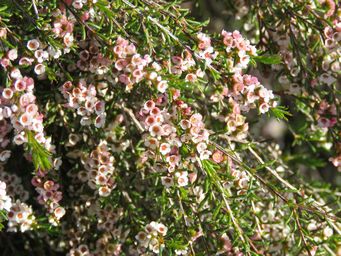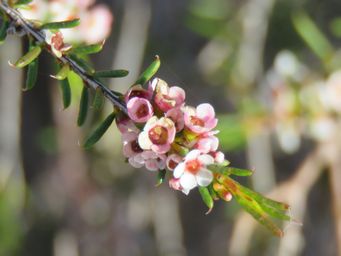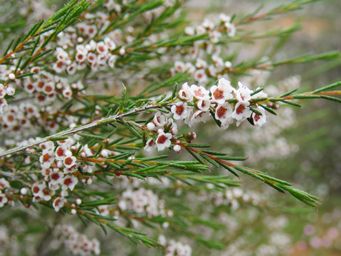Australia So Much to See
Maireana integra, Entire-wing Bluebush. Identification not certain.
This species has the entire upper area of the perianth covered
in hairs, and it has no slits in the wing. Leaves are lightly hairy, semi-cylindrical, five to fourteen millimetres long and have
a rounded leaf tip. Shrubs grow up to one metre high.
Maireana triptera, Three-winged Bluebush, Three-wing Bluebush.
This shrub can grow to seventy centimetres in height and is glabrous
(basically hairless). Leaves are almost terete (cylindrical), succulent, and up to three centimetres long, terminating with
a point. Branchlets are smooth (hairless) and have red and green stripes down their length. Wings may be green, yellow or pink,
and dry to a dark brown or black. Turbinate (funnel shaped) tube mostly five perpendicular wings attached and fused to the horizontal
wing which has no slit.
August
Maireana trichoptera, Hairy Fruit Bluebush, Pink-seeded Bluebush, Downy Bluebush, Spike Bluebush.
A small shrub to fifty centimetres
tall with flowers along the straight hairy stems, one at each leaf base. The upper surface of the fruiting body pink to red
around a green centre, with a single hair covered horizontal wing with one slit. Succulent and hairy leaves are half to one
centimetre long and one and a half to two millimetres wide, with blunt tips which may be tinged with pink.
August
Maireana tomentosa, Felty Bluebush, Felty leaf Bluebush. Not certain this is the correct identification as wing appears to have
slits. Maireana villosa, which does have a single slit in its wing is a possible alternative, but the longer and less hairy
foliage does not match as well.
Upper perianth glabrous (not hairy), or almost so. Fruit are less than fifteen millilitres
across, not hairy, and have no slit on wing. Leaves and stems densely covered with short hairs. Leaves small being five
to eight millimetres long.
Maireana sedifolia, Pearl bluebush, Bluebush, Hoary Bluebush, Hoary Saltbush.
A compact, bluish-grey shrub which grows to 1.5
metres, often forms dense clumps of plants. Leaves are succulent, four to eight millimetres long with a rounded tip, and are
covered in white hairs giving the shrub an almost white appearance. Flowers in pairs but usually only one matures. One centimetre
across wing, which is fine and mostly straw coloured, turning pale brown on maturity, has one slit.
I have no photos positively confirmed
as Maireana sedifolia. This occurs in areas of the inland Mid West and through the Goldfields. It is also found in other
states.
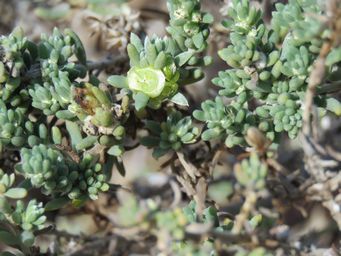
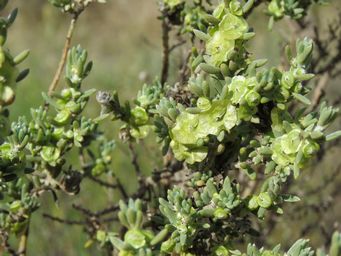
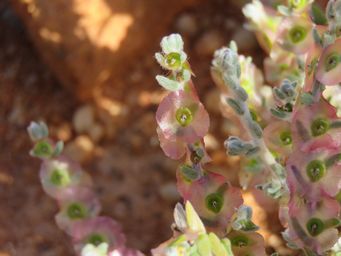
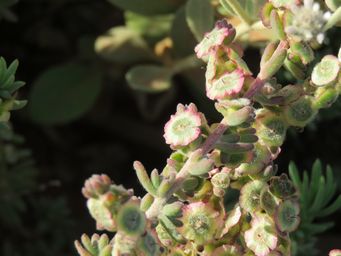
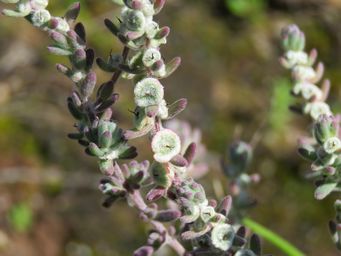
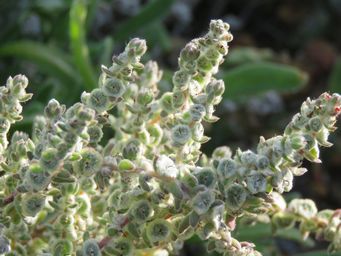
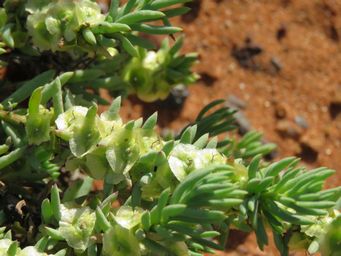
Tiny pink or white five petalled blossoms along the stems of a shrub which can grow to
two and a half metres tall. Flowers typically have ten stamens, but this is variable, with many having only five, opposite the
sepals, so between the petals. Stamens are bent 90 degrees at the tip. Foliage is cylindrical and has bumps along these leaves (tuberculate),
terminating at the tip with a spine which is significantly hooked.
August
Seen at a number of locations in the Mid West and
Wheatbelt regions, Western Australia. Found through the Mid West, inland northern Wheatbelt with a few in the southern Wheatbelt,
and into the north western Goldfields regions.
